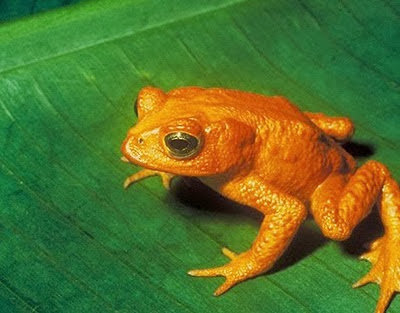
Extinction of The Golden Toad: It’s not the only species to disappear in the past 40 years – but it might just be the brightest. This fluorescent amphibian was found in the high altitude ridges of Costa Rica, but thanks to pollution, global warming and fungal skin infections, the species became extinct in 1989.
2. Zanzibar Leopard (1996)

One of several subspecies of leopard, the Zanzibar Leopard made its home on the Zanzibar archipelago of Tanzania. It's still unclear whether this large cat is technically extinct – there are occasional unconfirmed sightings.
Cause of extinction: Locals believed the leopards were kept by witches, and aggressively hunted them. The animals were seen as evil predators that must be exterminated – and even the government was in on the campaign. In the mid-'90s there was a short-lived conservation effort but it was deemed too little, too late.
3. Po'ouli (2004)
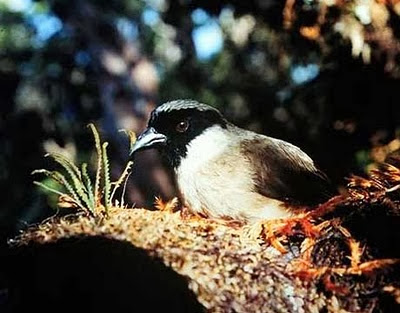
A native of Maui, Hawaii, the Po’ouli, or Black-Faced Honeycreeper, was only discovered in the 1970s. The birds inhabited the southwestern slope of Haleakala volcano. But the population declined rapidly, and by 1997 there were only three known Po’ouli left. Efforts to mate the remaining birds failed and the species was formally declared extinct seven years later.
Cause of extinction: Habitat loss, along with disease, predators and a decline in its food source – native tree snails – are all seen as reasons for the bird’s demise.
4. Madeiran Large White (2007)
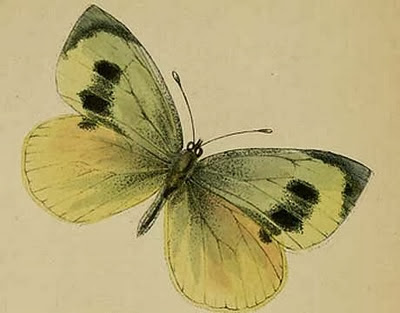
The stunning Madeiran Large White butterfly was found in the valleys of the Laurisilva forests on Portugal’s Madeira Islands. The butterfly's closest relative, the Large White, is common across Europe, Africa and Asia.
Cause of extinction: Loss of habitat due to construction as well as pollution from agricultural fertilizers are two major causes of the species' decline.
5. Pyrenean Ibex (2000)
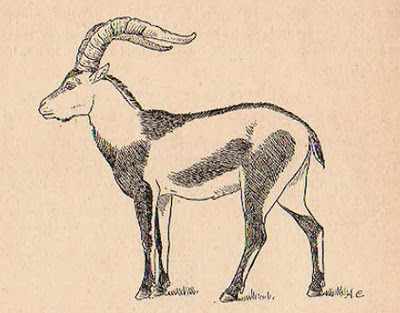
The last Pyrenean Ibex died in 2000. However, a cloned ibex, created from skin samples taken from the last Pyrenean Ibex, was birthed in 2009. It died shortly after birth from lung complications.
Cause of extinction: Hunting of the Ibex had caused the animal’s numbers to seriously dwindle and conservationists blame the Spanish government for failing to act in time to save it.
6. West African Black Rhinoceros (2006)

The majestic West African Black Rhino was declared extinct in 2006, after conservationists failed to find any in their last remaining habitat in Cameroon. The West African black rhino was one of four subspecies of rhinoceros.
Cause of extinction: Poachers hunted the rhino for its horn, which is believed by some in Yemen and China to possess aphrodisiacal powers.
7. Javan Tiger (1979)
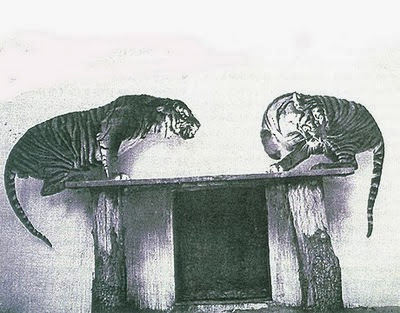
Similar in appearance to the Sumatran Tiger, the Javan Tiger was native to the Indonesian island of Java. In the 1800s they were so common they were considered pests by island natives, but as the island was developed their population dwindled. By the 1950s, only 20 tigers remained.
Cause of extinction: Loss of habitat and agricultural development lead to severe population decline. Conservation efforts in the 1940s and '50s were unsuccessful due to a lack of adequate land and planning.
8. Spix's Macaw (2004)
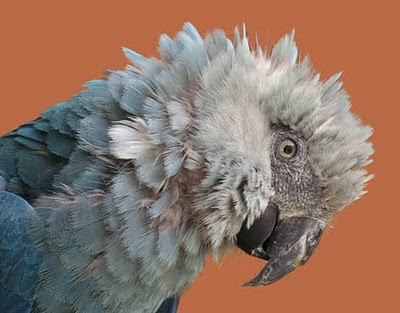
Spix's Macaw, also called the Little Blue Macaw, was known for its beautiful blue feathers. While some still exist in captivity, these tiny blue birds are extinct in the wild.
Cause of extinction: Habitat destruction and illegal trapping and trade contributed to the macaw's dwindling numbers.
9. Round Island Burrowing Boa (1975)

Native to Round Island, a tiny island off the coast of Mauritius, the Round Island Burrowing Boa preferred to live on the top-soil layers of volcanic slopes. It was once found on several other islands around Mauritius, but its population had dwindled by the 1940s, and could only be found on Round Island after 1949. It was last seen in 1975.
Cause of extinction: The introduction of non-native species of rabbits and goats to the island destroyed vegetation and upset the boa’s habitat.
10. Dutch Alcon Blue Butterfly (1979)
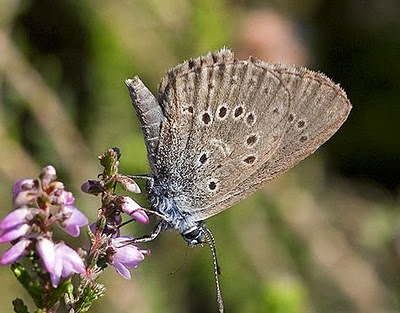
This Dutch butterfly -- a subspecies of the Alcon Blue -- was found mainly in the grasslands of The Netherlands. While closely related species (pictured here) still exist in parts of Europe and Asia, the last Dutch Alcon Blue was seen in the wild in 1979.
Cause of extinction: Increases in farming and building had a negative impact on the Alcon Blue's habitat and caused it to lose its main food source
No comments:
Post a Comment